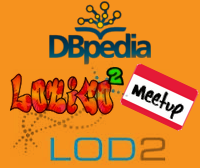
Session, FRI 13:30 - 15:00
Semantic Tools & Data Integration
The Semantic Model Editor: Efficient Data Modeling and Integration based on OWL Ontologies
Semantic Web and Linked Data are widely considered as effective and powerful technologies for integrating heterogeneous data models and data sources. However, there is still a gap between promising research results and prototypes and their practical acceptance in industry contexts. In context of our industry partners we observed a lack of tool-support that (a) enables efficient modeling of OWL ontologies and (b) supports querying and visualization of query results also for non-experts. The selection and application of existing semantic programming libraries and editors is challenging and includes hurdles that hinder software engineers, who are familiar with modeling approaches like UML, in applying semantic concepts in their solutions. In this paper we introduce the Semantic Model Editor (SMEd) to support engineers who are non-experts in semantic technologies in designing ontologies based on well-known UML class diagram notations. SMEd – a Web-based application – enables an efficient integration of heterogeneous data models, i.e., designing, populating, and querying of ontologies. First results of a pilot application at industry partners showed that SMEd was found useful in industry context, leveraged the derivation of reusable artifacts, and significantly accelerated development and configuration of data integration scenarios.
Andreas Grünwald, Dietmar Winkler, Martha Sabou, Stefan Biffl
TU Vienna, Austria
Easy SPARQling for the Building Professional
The reduction of green house gas emissions is one of the big global challenges for the next decades. (Linked) Open Data on this multi-domain challenge is key for addressing the issues in policy, construction, energy efficiency, production a like.
To explore this easily, the Semantic Web Company has developed the 'Tool for Building Energy Performance Scenarios' for the Global Buildings Performance
Network (GBPN). This is an interactive query / filtering tool which allows to create graphs and tables in slicing this multidimensional data cube. Results can be exported as open data in the
open formats: RDF and CSV (and as images for re-use in slides et al) and can also queried via a provided SPARQL endpoint (a semantic web based data API) by Virtuoso7. A built-in query-builder makes the use as well as the learning and understanding of SPARQL easy – for advanced users as well as also for non-experts or beginners.
About Martin Kaltenböck
- Martin Kaltenböck studied communication, psychology and marketing at the University of Vienna. In 2000 he was co-founder of punkt. netServices - an Austrian company specialised on information- & knowledge management as well as on Enterprise 2.0 solutions.
- He is co-founder and managing partner of the Semantic Web Company and as CFO responsible for financial and organisational issues. Furthermore he leads and works in several national and international research, industry and projects in public administration - mainly in the areas of project management, requirements engineering and communication activities.
- Furthermore he leads and works in several national and international research & industry projects as well as projects in public administration - mainly in the areas of project management, requirements engineering and communication activities.
- He is tutor and publishes in the fields of semantic information management, Linked (Open) Data as well as Open (Government) Data and social semantic web. He is lecturer at national and international conferences and business events in the mentioned topics.
- Martin is Certified Management Consultant since 2006, member of the Executive Board of the Austrian Chapter of the Open Knowledge Foundation (OKFN) as well as Member of the Advisory Council of the Open Knowledge (Foundation, UK) and invited expert of the governmental Cooperation OGD Austria. He is working as invited expert of W3C and is member of the Steering Board of the European Data Forum that he chaired in 2014.
Using Linked Data for Increasing Transparency in Distributed Supply Chains Networks
In this talk, we will present the Supply Chain Dashboard, which offers a unified spatial view on the logistics in the supply chain by utilizing RDF for connecting information from supply chain transactions to the Data Web. As a result, the flow of material and accompanying information can be observed in real-time, bottlenecks can be identified early and media breaks in the information flows are minimized.
A supplier scorecard allows the performance assessment of each supplier based on various metrics. In this way, decision making in supply chain management is supported. Supplier scores are evaluated on-the-fly based on historic and currently incoming supply chain messages. A visual builder allows the specification of advanced performance metrics through an intuitive interface. An integrated data integration tool supports the user in connecting internal supply chain data with external data sources, such as official statistical data sets. User-defined performance metrics may utilize this additional information and enable a more comprehensive view of the supply chain. A reporting component allows the user to drill-down into supplier scores and visualize scores by various dimensions. Results can also be exported for use in external BI-tools.
In summary, the Supply Chain Dashboard improves predictions regarding supply and demand and thus make supply chains more flexible, dynamic and efficient to manage.
Robert Isele
Robert Isele holds a MA in computer science from the Technical University of Munich and a PhD from the University of Mannheim. The focus of his research is data integration of Linked Data sources. He is leading the development of the Silk Link Discovery Framework and is member of the DBpedia project. In addition, he contributed to a number of data integration systems and worked in various FP7 projects.
brox IT-Solutions GmbH




